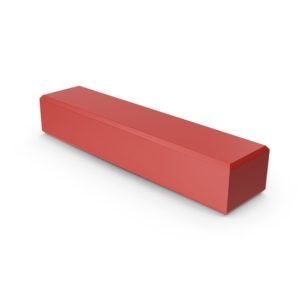Understanding Angles: How They Work and Their Practical Applications

Photo by Joel Filipe on Unsplash
Angles are fundamental geometric concepts that play a crucial role in various fields, from mathematics and physics to engineering and architecture. In this article, we will explore what angles are, how they work, and their practical applications in everyday life.
What are Angles?
An angle is formed when two lines or rays meet at a common point, known as the vertex. The amount of rotation required to bring one line or ray into the position of the other is measured in degrees. A complete rotation is divided into 360 degrees, with each degree further divided into minutes and seconds.
Angles are typically represented using the symbol “°” (degree). For example, a right angle, which is a quarter of a full rotation, is denoted as 90°. Angles can be classified into various types based on their measurements:
- Acute Angle: An angle that measures less than 90°.
- Right Angle: An angle that measures exactly 90°.
- Obtuse Angle: An angle that measures between 90° and 180°.
- Straight Angle: An angle that measures exactly 180°.
- Reflex Angle: An angle that measures between 180° and 360°.
How Do Angles Work?
Angles are not only used to measure rotation but also to describe the relationships between lines, shapes, and objects. Here are some key concepts related to angles:
Adjacent Angles
Adjacent angles are two angles that share a common vertex and a common side but do not overlap. The sum of adjacent angles is always equal to the straight angle (180°).
Complementary and Supplementary Angles
Complementary angles are two angles that add up to 90°. For example, if one angle measures 30°, the other angle must measure 60° to make a total of 90°.
Supplementary angles, on the other hand, are two angles that add up to 180°. For instance, if one angle measures 120°, the other angle must measure 60° to make a total of 180°.
Vertical Angles
Vertical angles are formed when two lines intersect. They are opposite to each other and have equal measures. For example, if one angle measures 70°, the vertical angle will also measure 70°.
Practical Applications of Angles
Angles have numerous practical applications in various fields:
Architecture and Engineering
Angles are crucial in architectural and engineering design. They help determine the stability and strength of structures. Architects and engineers use angles to calculate the slopes of roofs, the angles of support beams, and the angles of intersections in road designs.
Navigation and Surveying
In navigation and surveying, angles are used to determine direction and distance. Sailors and pilots use angles to plot their course and navigate accurately. Surveyors use angles to measure land boundaries and create accurate maps.
Trigonometry and Mathematics
Angles are a fundamental concept in trigonometry, which is the study of triangles and their relationships. Trigonometric functions such as sine, cosine, and tangent are used to calculate unknown angles and sides in triangles. These functions have applications in fields like physics, engineering, and computer graphics.
Art and Design
Angles play a significant role in art and design. Artists use angles to create perspective and depth in their paintings and drawings. Graphic designers and photographers use angles to compose visually appealing images and capture unique perspectives.
Sports and Recreation
Angles are essential in sports and recreational activities. Athletes use angles to determine the trajectory of a ball or the optimal angle for a jump. Angles are also used in activities such as skateboarding, snowboarding, and surfing to perform tricks and maneuvers.
Understanding angles and their applications can enhance our problem-solving skills and provide a deeper appreciation for the mathematical and geometric principles that govern our world. Whether you’re an architect, engineer, artist, or simply curious about the world around you, angles are a fascinating concept worth exploring.
So, the next time you see two lines intersecting or a structure with unique angles, take a moment to appreciate the role angles play in our everyday lives.




